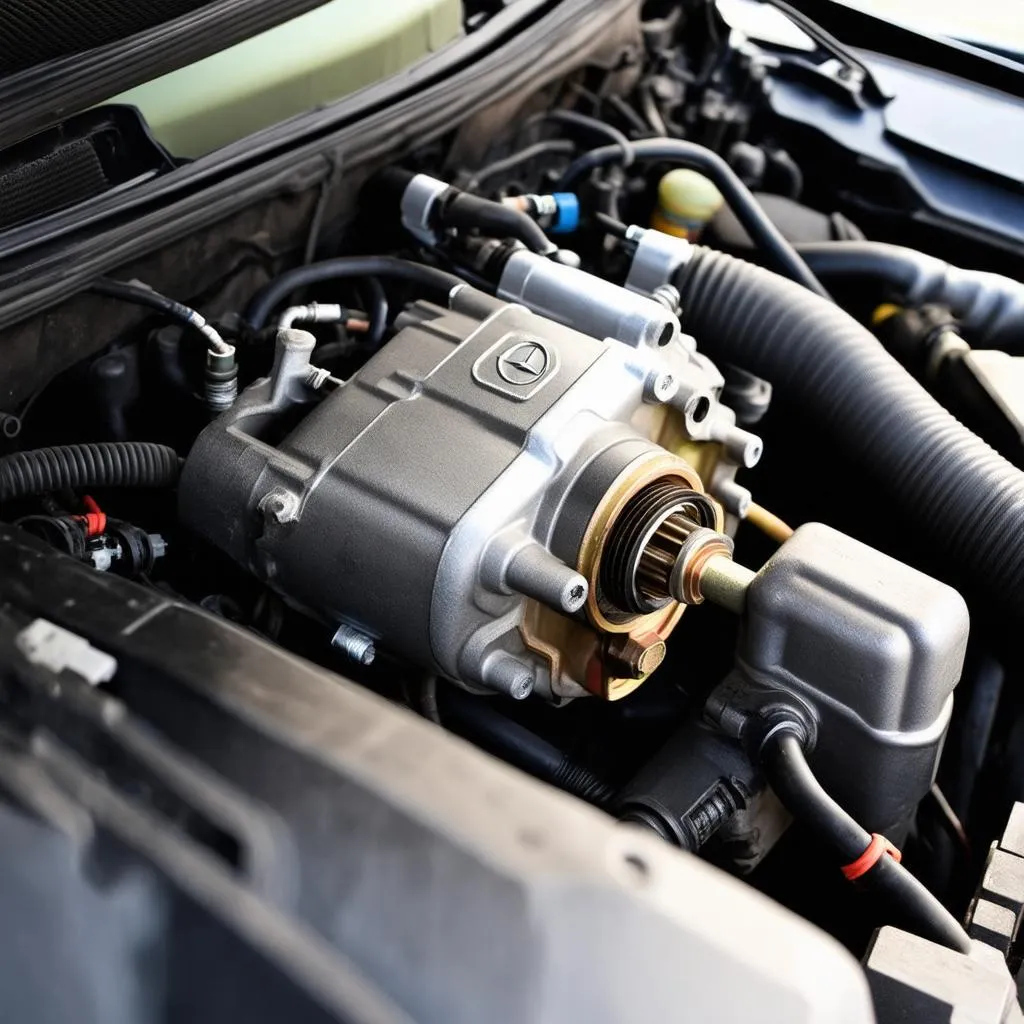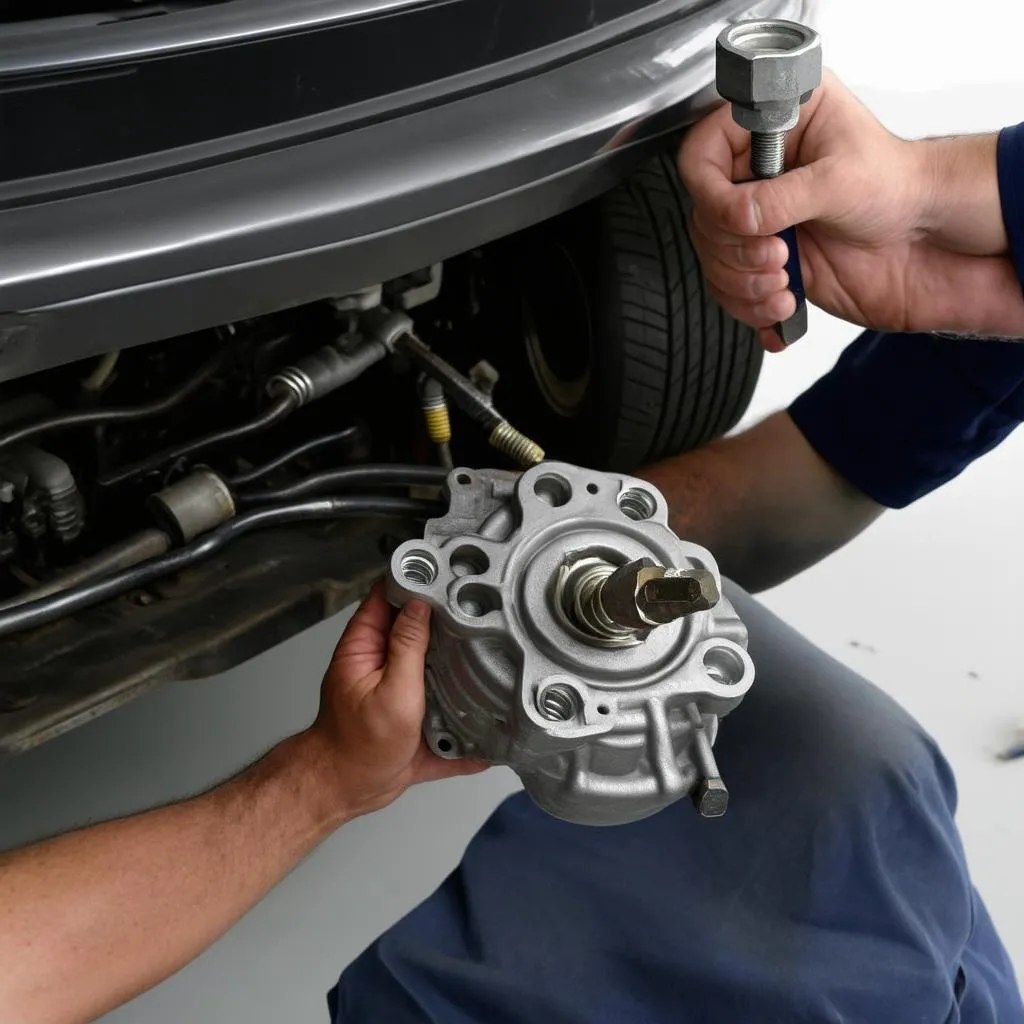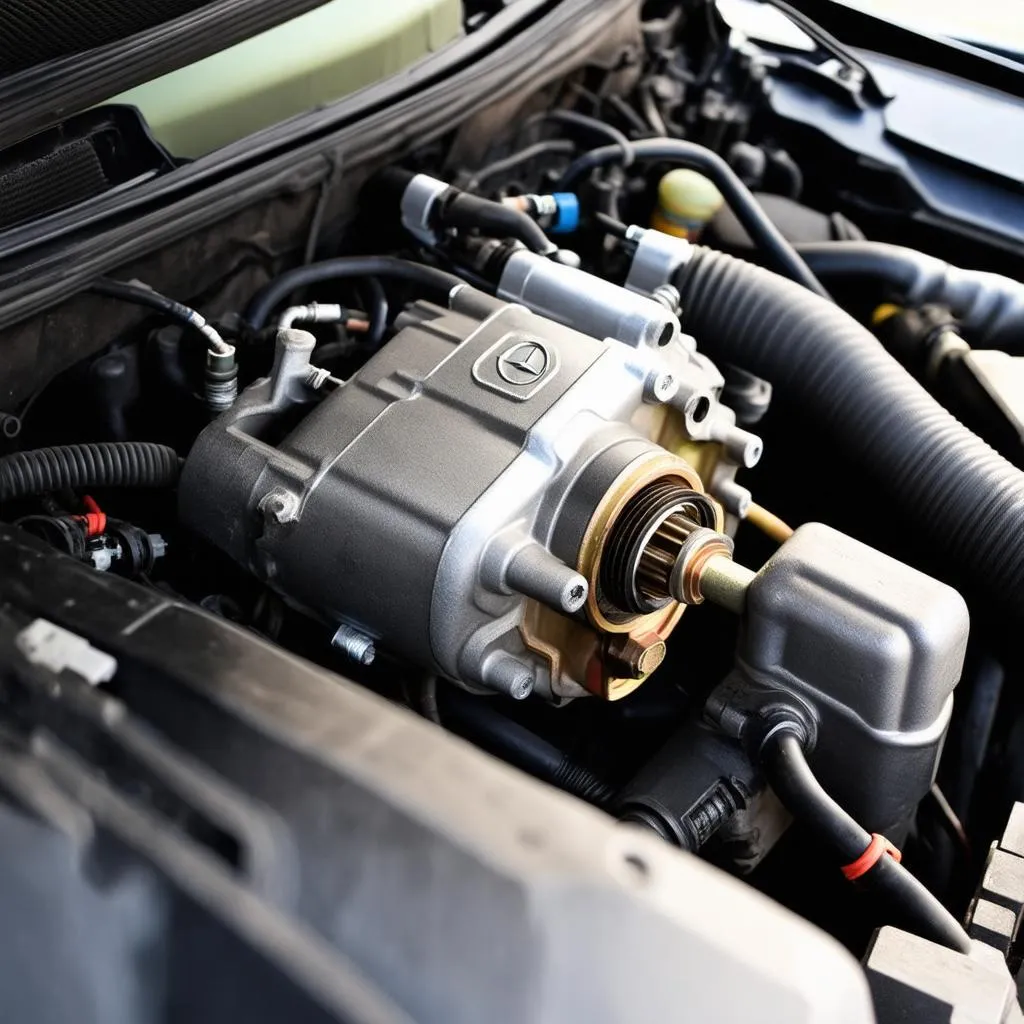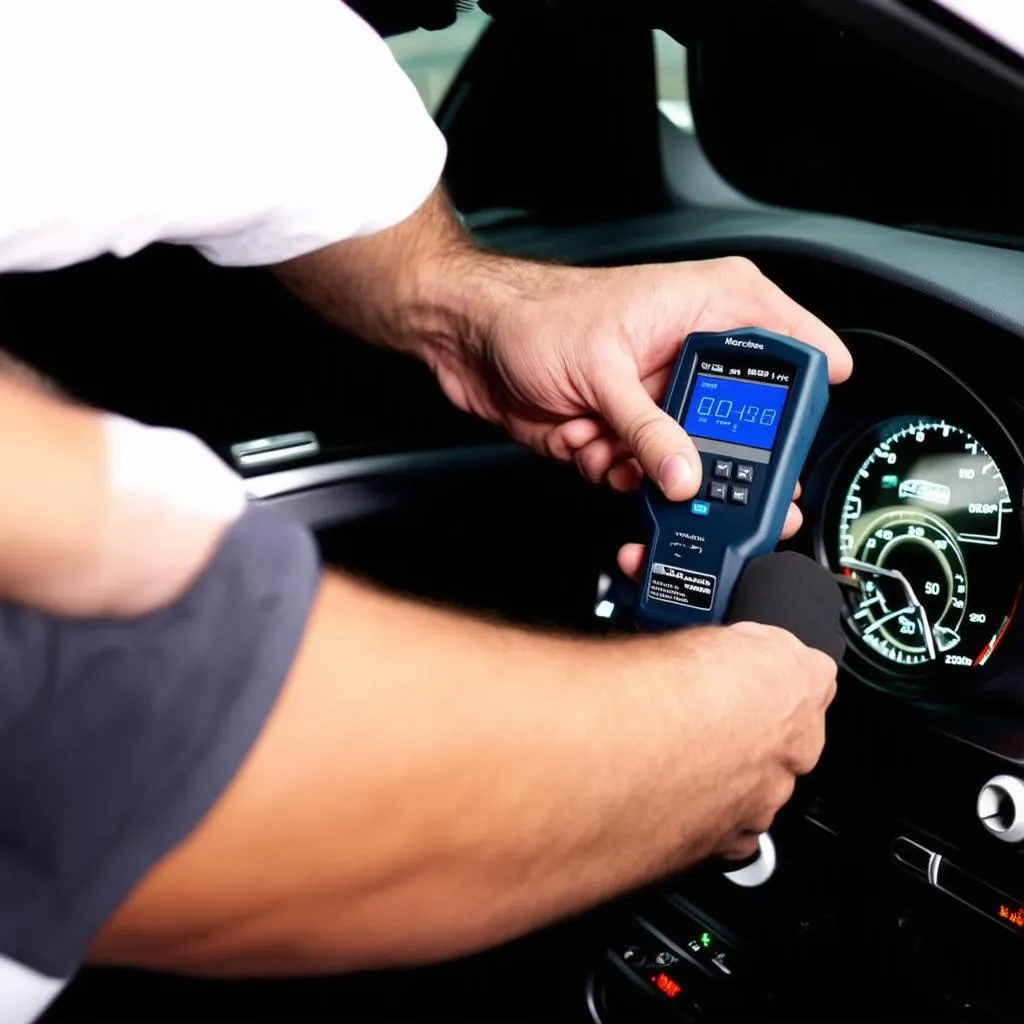Thinking about tackling a starter replacement on your 2003 Mercedes CLK 320? It’s a job that’s within reach for DIYers with some mechanical experience. Having the right tools is crucial for a smooth repair. Let’s break down the essentials you’ll need to get the job done right.
Gearing Up for the Job: Essential Tools
Before you dive in, make sure you have these must-have tools:
- Socket Set: A comprehensive socket set is your best friend. You’ll need a range of sizes, including metric sizes common to Mercedes. Look for a set with both standard and deep sockets for versatility.
- Ratchet Wrenches: To break loose stubborn bolts, a set of ratchet wrenches in various sizes is essential.
- Torque Wrench: Properly tightening bolts is key to preventing leaks and damage. A torque wrench lets you apply precise force.
- Extensions and Universal Joint: Accessing those hard-to-reach starter bolts often requires extensions and a universal joint to navigate tight spaces.
- Pry Bars: Gentle persuasion is sometimes needed to separate components. A set of pry bars in different sizes can be invaluable.
- Car Ramps or Jack and Stands: Safety first! You’ll need to elevate your CLK 320 to access the starter. Car ramps offer a stable platform, while a jack and jack stands provide more clearance.
- Work Light: Good lighting is essential, especially when working in the engine bay. A bright work light illuminates those dark corners.
- Gloves and Safety Glasses: Protect yourself from sharp edges and debris with sturdy gloves and impact-resistant safety glasses.
Mercedes-Specific Considerations
While the tools above are standard for many car repairs, here are some specifics to keep in mind for your CLK 320:
- Battery Disconnect: Always disconnect the negative battery cable before working on any electrical components.
- Starter Location: The starter on a 2003 CLK 320 is typically located near the transmission bellhousing, accessible from beneath the vehicle.
- Wiring Harness: Be mindful of the wiring harness connected to the starter. Carefully disconnect it before removing the starter.
FAQs: Addressing Common Questions
Q: Can I replace the starter myself, or do I need a mechanic?
A: With the right tools and some mechanical aptitude, replacing the starter on a CLK 320 is a manageable DIY project. However, if you’re uncomfortable working on your car, seeking professional help is always a wise choice.
Q: How long does it typically take to replace the starter?
A: For most DIYers, the job can take around 2-4 hours. Having the right tools and being familiar with the process can significantly reduce the time required.
Q: Are there any specialized tools I should be aware of?
A: While not strictly necessary, having a Mercedes-Benz specific scan tool, like those offered by Cardiagtech, can be helpful for diagnosing starter issues and resetting any fault codes after the repair.
 CLK 320 Starter
CLK 320 Starter
Expert Insights:
“Having the right tools can make all the difference when tackling car repairs,” says automotive expert [Fictional Expert Name], author of [Fictional Book Title]. “Investing in quality tools and taking the time to understand their proper use will not only make your projects easier but also contribute to safer and more successful repairs.”
Getting in Touch for More Support
Need further assistance? CARDIAGTECH offers a range of diagnostic tools and resources for Mercedes-Benz vehicles. Visit our website or contact our support team for expert guidance on your automotive repair needs.
 CLK 320 Repair
CLK 320 Repair
This guide provides a solid starting point for your 2003 Mercedes CLK 320 starter replacement project. Always refer to your vehicle’s service manual for specific instructions and torque specifications. And remember, when in doubt, consult a qualified mechanic.


